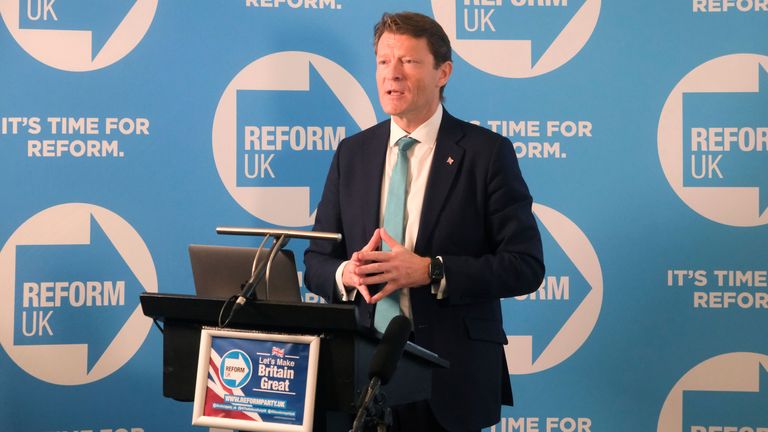Preparing For Future Oil Price Volatility: Strategies For Airlines

Table of Contents
Hedging Strategies to Mitigate Risk
Fuel costs represent a substantial portion of an airline's operational expenses. Hedging strategies are crucial for mitigating the financial impact of unpredictable price swings. Let's explore key approaches:
Fuel Hedging Contracts
Airlines employ various fuel hedging contracts to lock in future fuel prices, reducing exposure to market volatility. These contracts include:
- Futures Contracts: These contracts obligate the buyer to purchase a specific quantity of fuel at a predetermined price on a future date.
- Pros: Provides price certainty.
- Cons: Requires significant capital commitment and lacks flexibility to react to market shifts.
- Options Contracts: These provide the right, but not the obligation, to buy fuel at a specified price.
- Pros: Offers flexibility and downside protection.
- Cons: Requires a premium payment and may not fully capture potential upside gains.
- Swaps Contracts: These involve exchanging fixed-rate payments for variable-rate payments linked to fuel prices.
- Pros: Can provide a predictable cost structure.
- Cons: Can be complex and require specialized expertise.
Effective hedging requires a thorough understanding of market dynamics and risk management. Collaboration with experienced financial professionals is paramount to developing and implementing a customized hedging strategy tailored to the airline's specific needs and risk tolerance.
Alternative Fuel Sources
The reliance on traditional jet fuel exposes airlines to price volatility. Investing in alternative fuel sources, particularly Sustainable Aviation Fuel (SAF), offers a long-term solution.
- SAF's Current State: While SAF is currently less available and more expensive than traditional jet fuel, its cost-effectiveness is steadily improving.
- Government Incentives: Many governments offer incentives and are implementing regulations to encourage SAF adoption. This includes tax breaks and mandates for blending SAF into conventional fuel.
- Environmental Benefits: Transitioning to SAF significantly reduces carbon emissions, aligning with environmental sustainability goals and potentially attracting environmentally conscious customers.
Operational Efficiency and Cost Reduction
Beyond hedging, operational efficiencies play a vital role in minimizing the impact of fuel price volatility.
Route Optimization and Network Planning
Data-driven route optimization is crucial.
- Advanced Analytics: Utilizing advanced analytics and sophisticated route planning software allows airlines to identify the most fuel-efficient flight paths, considering wind patterns and other factors.
- Route Consolidation: Consolidating routes and optimizing flight schedules can significantly reduce fuel consumption and associated costs.
- Dynamic Scheduling: Adapting flight schedules in real-time based on fuel price fluctuations and passenger demand can provide operational flexibility.
Fuel-Efficient Aircraft and Technologies
Investing in modern, fuel-efficient aircraft and technologies is a long-term strategy with significant cost savings.
- Aircraft Technology: Lighter aircraft materials and improved engine technology contribute to reduced fuel consumption per passenger.
- Technological Advancements: Continuous advancements in aircraft design and engine efficiency offer ongoing opportunities for fuel savings.
Staff Training and Efficiency
Highly trained staff contributes directly to fuel efficiency.
- Pilot Training: Pilot training programs focused on fuel-efficient flying techniques can yield substantial savings.
- Ground Operations: Streamlined ground operations and efficient maintenance procedures minimize delays and fuel wastage.
Financial Planning and Resilience
Sound financial planning is crucial for weathering periods of high fuel prices.
Diversification of Revenue Streams
Airlines should diversify revenue streams beyond ticket sales.
- Ancillary Revenue: Ancillary revenue sources, such as baggage fees, in-flight services, and loyalty programs, provide a buffer against fuel price increases.
- Cargo Operations: Integrating cargo operations can generate additional revenue streams and improve overall profitability.
- Strategic Partnerships: Strategic partnerships with other businesses can create opportunities for revenue diversification and cost reduction.
Strong Financial Reserves
Maintaining substantial financial reserves is critical for weathering periods of high fuel costs.
- Financial Planning: Proactive financial planning and stress testing are essential to prepare for potential economic downturns.
- Favorable Financing: Securing favorable financing options ensures access to capital during periods of financial strain.
Dynamic Pricing Strategies
Implementing dynamic pricing strategies enables airlines to adjust ticket prices in response to fuel cost changes and market demand.
- Data Analytics: Utilizing data analytics and predictive modeling allows airlines to optimize pricing decisions based on real-time market conditions.
- Balancing Profitability and Customer Satisfaction: Dynamic pricing requires careful consideration of customer sensitivity to price changes.
Conclusion
Preparing for future oil price volatility requires a multi-pronged approach. The key takeaways are effective hedging strategies, enhanced operational efficiency, and robust financial planning. Airlines must adopt a proactive stance, investing in fuel-efficient technologies, diversifying revenue streams, and maintaining strong financial reserves. Start preparing for future oil price volatility today! Develop a comprehensive strategy to navigate oil price volatility now and ensure the long-term sustainability and profitability of your airline.

Featured Posts
-
 Fortnite Community Backlash Recent Shop Update Disappoints
May 03, 2025
Fortnite Community Backlash Recent Shop Update Disappoints
May 03, 2025 -
 Reform Uk In Danger Five Reasons For Concern
May 03, 2025
Reform Uk In Danger Five Reasons For Concern
May 03, 2025 -
 The State Of The Us Economy Under Biden Causes And Consequences
May 03, 2025
The State Of The Us Economy Under Biden Causes And Consequences
May 03, 2025 -
 Gewinnzahlen Lotto 6aus49 Mittwoch 9 April 2025
May 03, 2025
Gewinnzahlen Lotto 6aus49 Mittwoch 9 April 2025
May 03, 2025 -
 Lower Electricity Tariffs Dutch Utilities Test Solar Peak Pricing
May 03, 2025
Lower Electricity Tariffs Dutch Utilities Test Solar Peak Pricing
May 03, 2025
Latest Posts
-
 Tragedy In Manchester Funeral For Young Poppy Atkinson
May 03, 2025
Tragedy In Manchester Funeral For Young Poppy Atkinson
May 03, 2025 -
 Harry Potter Shop Chicago Now Open What To Expect
May 03, 2025
Harry Potter Shop Chicago Now Open What To Expect
May 03, 2025 -
 Lionesses Match Details Tv Channel Kick Off Time And Streaming For Belgium Vs England
May 03, 2025
Lionesses Match Details Tv Channel Kick Off Time And Streaming For Belgium Vs England
May 03, 2025 -
 Poppy Atkinson Remembered Funeral For Beloved Manchester United Fan
May 03, 2025
Poppy Atkinson Remembered Funeral For Beloved Manchester United Fan
May 03, 2025 -
 How To Watch Belgium Womens Football Tv Channel For Belgium Vs England
May 03, 2025
How To Watch Belgium Womens Football Tv Channel For Belgium Vs England
May 03, 2025
